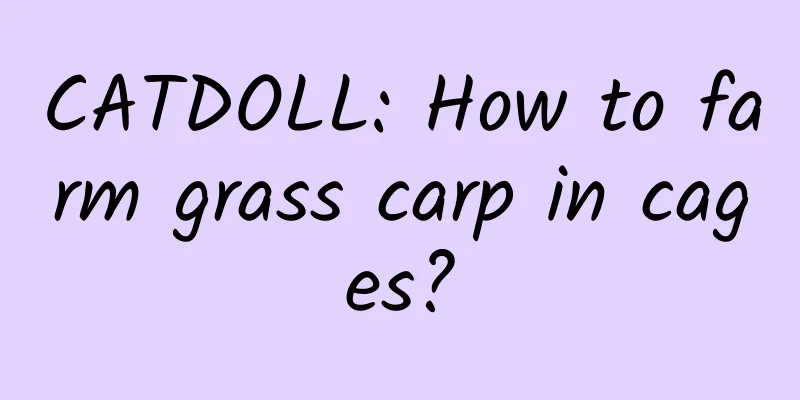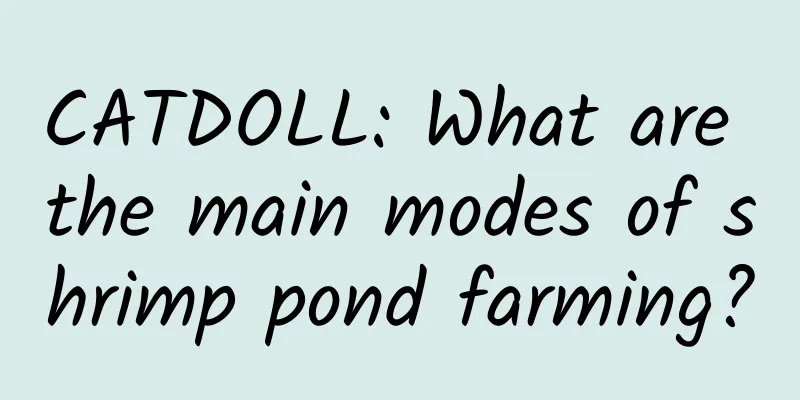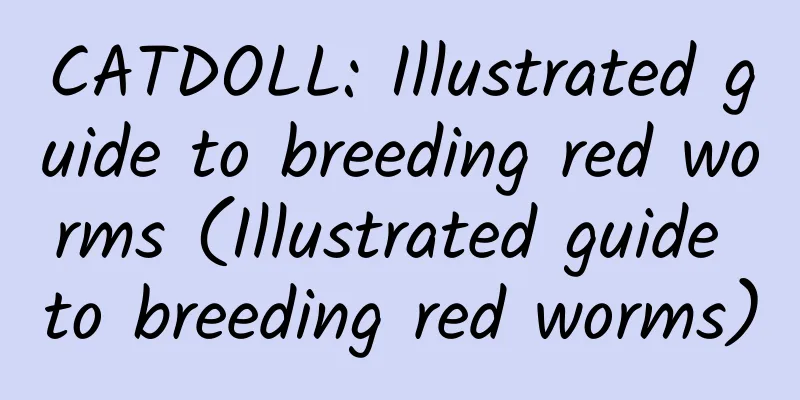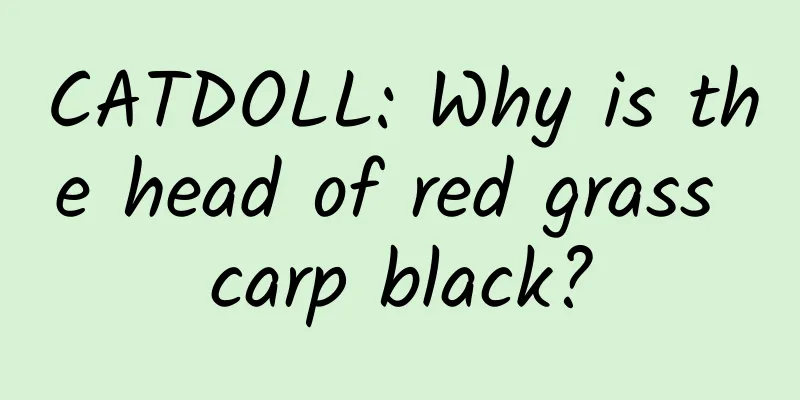CATDOLL : CATDOLL: How to farm grass carp in cages?

|
6 technical points of cage fish farming Breeding conditions should be suitable For cage farming of grass carp, it is advisable to choose a place that is sheltered from the wind, facing the sun, with an open water surface, stable water level, fresh water quality, unpolluted water source and convenient transportation. The water body should be rich in dissolved oxygen, with a pH value of 7.0-8.5, a water depth of 4-5 meters, a water transparency of more than 50 centimeters, and a dissolved oxygen level of about 5 mg/L. The farming area should also have complete water conservancy facilities, capable of drainage and irrigation, and not easily affected by floods. The cage setting should be reasonable The cage should be made of polyethylene material, with a double-layer structure, with a knotless cage inside (closed type) and a knotted cage outside (open type). The upper cover net is a single layer, with an inner mesh of 3 cm to 3.5 cm and an outer mesh of 4 cm. The cage specifications can be 5 meters × 5 meters × 2.5 meters. The frame of each cage is made of 4 8-meter-long bamboos to support the entire cage. The sinker is a long stone, tied to the 4 corners of the cage below, so that the cage can be fully unfolded in the water. The cage is fixed with a cable, which is a 4-cm-diameter polyethylene thick rope. The cable spans the water surface and is tied to the fixed pile on the shore after being straightened. The two cables are 8 meters apart. After the cage is fixed with the cable, the top of the cage is 20 cm to 30 cm above the water surface. The cage should be installed and put into the water 10 days after the fingerlings are put into the cage, so that algae can be attached to the net to make the mesh smooth. After the fingerlings are put into the cage, avoid the net from scratching the fish body, because the fingerlings are generally not adapted to the cage, and are easily bumped and scratched. The cage can be set up as a single cage or in groups. The distance between cages in a single cage is more than 25 meters. When set up in groups, every 5 to 10 cages are grouped in series, with a single or double row, and the distance between cages in the group is 4 meters, and the distance between groups is about 100 meters. The direction of the cage arrangement should be perpendicular to the direction of the water flow. In order to prevent debris from damaging the cages, fences should be set outside the aquaculture waters. Fish stocking should be scientific There are four aspects to consider when stocking fish: First, the fish should be of good quality. The fish should be strong, neat, with intact scales and fins, and free of disease and injury. The fish should be healthy and free of trauma. The nets should be prevented from scraping the fish mucus, because the mucus of the fish can adhere to and remove attached microorganisms and debris, which is the first barrier for the fish to resist diseases. Therefore, when choosing fish, smooth and sticky ones are preferred, but rough ones are not. When catching fish, you should follow the direction of the fish's swimming, and you should not catch it head-on to avoid causing harm. Second, the size should be large. When stocking fish, it is advisable to stock large-sized fish of more than 20 cm, which have strong disease resistance, high survival rate, and short breeding cycle, and can be put on the market by the end of the year. Third, the density should be appropriate. Generally, the size of grass carp in cages is 300g/tail to 500g/tail, and the stocking volume is about 20/square meter to 25/square meter. In the cages, some silver carp and bighead carp with a size of 200g/tail to 300g/tail and bream with a size of 100g/tail can be properly raised. Fourth, pay attention to the method. Before the fish are put into the cage, they should be bathed and disinfected to kill the parasites on the body surface and reduce the probability of pathogen transmission. Generally, they can be soaked in 3% to 5% salt water or 20ppm potassium permanganate for 15 minutes. The stocking time is generally in late autumn or early winter, and it is better to stock when the water temperature is around 15℃. At this time, the grass carp can still eat after entering the cage, and there is a recovery period. After the spring, they can start eating early, which increases the growth time of the fish and lays the foundation for high yield and high efficiency. Feeding should be done carefully When raising grass carp in cages, it is generally not advisable to feed a large amount of grass, because grass is not nutritious enough to promote its growth. Full-price pellet feed should be fed to improve feed utilization and reduce water pollution caused by residual bait. Grass carp can be fed 2 to 3 days after entering the cage. Before feeding, it should be domesticated. According to the rhythm of "slow-fast-slow" and the feeding amount of "little-more-little", domesticate for 1 hour to 1.5 hours every day. After 10 consecutive days of domestication, when most fish can float up to grab food, normal feeding can be carried out. The daily feeding amount is 3% to 5% of the total body weight of the fish. Feed 3 to 4 times a day, and each feeding is about 0.5 hours to 1 hour. Most fish species are full and swim away. The feeding amount each time should also be reasonably adjusted according to changes in water temperature, weather changes, fish feeding and activity conditions, etc. In terms of feeding methods, the "four determinations" principle should be emphasized. Feeding should be done in small handfuls. When the fish eat one handful, throw the second handful. When the fish are not competing for food fiercely, you can slowly throw a small amount so that the weak fish can also eat the feed to ensure their balanced growth. Grass carp grows fastest when the water temperature is 25℃~34℃. The feeding amount should be increased. In bad weather such as rainy, sultry, thunderstorms, etc., the feeding should be reduced or stopped. Green fodder can be fed once every night. It should be disinfected with 1% bleaching powder and then put into the net cage. The feeding amount should be based on no grass left the next day. Daily management should be strengthened Daily management is crucial for cage farming of grass carp. The following aspects should be taken into consideration: (1) Inspect cages regularly. Inspect cages regularly, check fish growth regularly, adjust feeding appropriately, observe and analyze fish conditions carefully, deal with problems promptly, and keep cage farming logs to record daily water temperature, feeding, dead fish, and disease conditions. (2) Brush cages frequently. Brush cages every 10 to 15 days to remove residual bait, dirt, and algae to ensure adequate water exchange. (3) Check cages regularly. Check cages frequently and repair any damage promptly to prevent escaped or ferocious fish from entering the cages. During the flood season, check rope strength, cable strength, and net deformation promptly. (4) Adjust cages frequently. As the reservoir water level rises and falls, cages must be adjusted to a position with appropriate water depth and water quality. Fish disease prevention should pay attention to First of all, we must adhere to healthy breeding, operate according to regulations, and prevent diseases before they happen. Secondly, we must do a good job of prevention and artificial immunization. Generally, before entering the box, we will inject grass carp's "three major bacterial diseases" tissue plasma inactivated vaccine and grass carp hemorrhagic disease tissue plasma inactivated vaccine, ranging from 0.2 ml to 0.5 ml. Fish species over 8 cm can be injected, mainly at the base of the dorsal fin and the base of the pelvic fin. At the same time, the fish species should be disinfected by soaking in salt water before entering the box, and they should also be disinfected regularly to prevent diseases. Feed medicated bait once every 10 days or so, and feed for 3 to 5 consecutive days to prevent parasites in the fish body; every 10 to 15 days, each cage is sprayed with 150 to 200 grams of quicklime pulp while hot to purify the water quality. Spray the whole box with insecticides and fungicides every month. In the hot season, you can use the bag hanging method around the cage, and the drugs can be selected from bromine, chloride, hydantoin, copper sulfate and ferrous sulfate mixture. In addition, note that green feed must be disinfected before feeding. Insist on feeding high-quality feed, and do not feed spoiled or expired feed. Grass carp cultured in net cages are generally susceptible to Saprolegniasis, red skin disease, gill rot, enteritis, hemorrhagic disease, etc. When the disease occurs, it is advisable to ask professional technicians to make a correct diagnosis and prescribe the right medicine. Do not ignore the disease or treat it randomly, which will cause losses. |
<<: CATDOLL: How to prevent and treat tapeworm disease
>>: CATDOLL: What are the cultivation methods and precautions for snapdragons?
Recommend
CATDOLL: What are the detailed steps for hatching grass carp fry?
1) From the hatching of the bridging membrane to ...
CATDOLL: Chicken farming tips: a comprehensive guide from raising to selling
introduction Chicken farming is an important indu...
CATDOLL: What problems and skills should be paid attention to when raising flies (Video)
1. Fly breeding technology? The growth process of...
How to efficiently check pig prices: a comprehensive guide
In the agriculture and animal husbandry industry,...
CATDOLL: Why do many barracudas not bite the hook on the water surface?
1. Why do many barracudas not bite the hook on th...
CATDOLL: How much does it cost to raise fish in cages?
How much does it cost to raise fish in cages? A s...
CATDOLL:How to breed earthworms?
Earthworm farming technology Artificial breeding ...
CATDOLL: How to raise parrot fish and what is the suitable water temperature for parrot fish?
How to raise parrot fish? What is the suitable wa...
CATDOLL: Determination method and diagnosis technology of chicken mycoplasma disease
What is Mycoplasma disease in chickens? Mycoplasm...
CATDOLL: The mullets are not taking the hooks on the water surface?
1. Mullets are on the water surface and don’t tak...
CATDOLL: Koi breeding methods and precautions, how to raise them well
Koi breeding methods and precautions, how to rais...
CATDOLL: What are the common sense of raising snails? (What are the common sense of raising snails?)
1. How to raise snails? What do snails eat? 1. Yo...
CATDOLL:birds and bees
1. Birds and bees The idiom "the birds and b...
CATDOLL: How many golden silkworms are needed for one pound of silk?
1. How many silkworms are needed to make a silk q...
CATDOLL: Where are hairy crabs produced?
Where are hairy crabs produced? When it comes to ...









